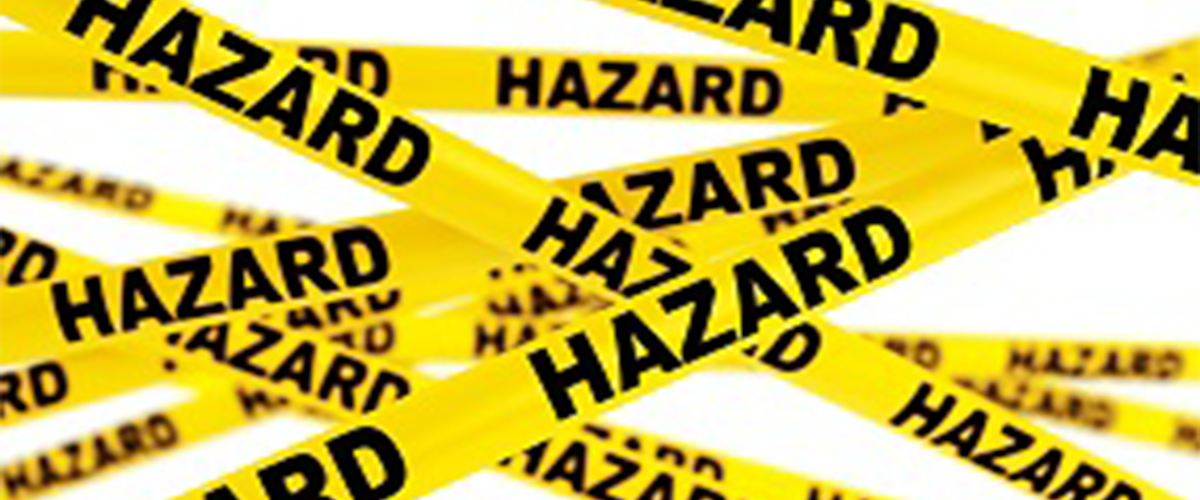If not well maintained and managed, construction sites can be full of hazards that can put workers or clients lives at risk. Here, we explain the most common construction injuries and the best way to prepare for (and ultimately avoid) them.
Struck-by injuries
Nearly 10% of construction site fatalities are caused by falling objects alone. Flying, falling, swinging, and rolling objects all present hazards on the job site, and all require specific safety measures to prevent injuries and fatalities. Let’s break it down:
- Flying objects. These can come from any tasks that require pushing, pulling, prying, or the use of power tools. Be cautious when using tools or exerting force on an object, and take all precautions: eye and face protection, machine guards, and adherence to all protocols from training. When using compressed air to clean, keep it to 30 psi.
- Falling objects. One of the biggest on-site risks, falling objects can come from cranes, scaffolding, or any other overhead work. Protect your body with hard hats and never work underneath a moving load. Implement toe boards and debris nets to catch falling objects, obey the lifting capacity of cranes and hoists, and be cautious around unbalanced loads.
- Swinging objects. Mechanically lifted objects can strike workers if they aren’t careful. Always stay out of the swinging radius of cranes, backhoes and other lifting equipment, and use extra caution on windy days. Prevent slippage by loading rigs properly, and use a tag line for any workers on foot that have to control loads.
- Rolling objects. the main rolling objects to look out for are motor vehicles. Never drive a vehicle in reverse with an obstructed rear view without an audible reverse alarm and another worker signaling a safe path. Use parking brakes (and chock the wheels if parking on an incline) and stay behind protective barriers whenever possible. Finally, wear high-visibility clothes and make sure drivers can see you to avoid any blind-spot accidents.
Working at height
Working at height is the #1 cause of fatal injuries on the jobsite, adding up to one-quarter of all worker fatalities. Proper training for all equipment and surfaces (ladders, scaffolding, roofs, etc.) is a vital first step towards safety. There should also be plans in place for proper at-height work, as well as precautions are taken in the instance of an accident, such as safety nets or double guard-rails. To mitigate the most accidents, avoid working at height as much as possible; assemble items on the ground level and only permit necessary personnel on elevated surfaces.
Noise
The loud and repetitive noises of construction sites can result in deafness and other long-term hearing problems. In the short-term, it can also cause distractions that lead to easily-avoided injuries. A properly managed construction site should carry out a noise risk assessment and provide PPE where necessary.
Electrocutions
Generators, power tools, machinery, and electrical wiring can all result in serious electric burns or even worker fatalities. Before working, locate and identify nearby utilities, and scan overhead for power lines before operating equipment. Use ground-fault circuit interrupters and never operate portable electric tools unless they are grounded (or double insulated). Strictly enforce safe distance requirements for power lines, and stay alert to electrical hazards when working at height.
Caught in between objects
Workers can get caught or compressed in machinery, collapsing structures, or shifting objects. To prevent being crushed in a cave-in, never work in an unprotected trench that is at or over 5 feet deep, and protect the trench/excavation area with sloping, shoring, benching, or other trench yield systems. Keep equipment at least two feet back from the edge of the excavation. When working with machinery, keep safety guards on, tie up long hair, and don’t wear any loose clothing or jewelry. In general, you should always be aware of heavy equipment locations, and be sure that all equipment loads are stable and secure. Take common precautions like wearing seatbelts and high-visibility clothing when applicable. And never, ever stand between moving materials and an immovable structure.
Hand Arm Vibration Syndrome
HAVS is a debilitating disease that can result from long-term use of handheld power tools. Although it is preventable, once it occurs, the damage is permanent. To protect your blood vessels, nerves, and joints from irreparable injury, keep all equipment well-maintained and wear appropriate protection when handling vibrating tools.
Although there are several risks involved with construction, many of them are easily preventable with education, awareness, and simple precautions. Protect you and your workers by maintaining strict safety standards at all times and mitigating injuries with multiple systems of safeguarding.






